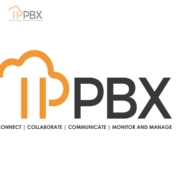Comparing the Best Communication Platforms: What to Know
In today’s fast-paced business environment, effective communication is essential for success. The right communication platform can enhance collaboration, improve customer interactions, and streamline operations. With numerous options available, choosing the best communication platforms for business can be overwhelming. This article will guide you through the key factors to consider when comparing these platforms and highlight some of the leading solutions on the market.
Importance of Choosing the Right Communication Platform
Effective communication tools help businesses achieve various objectives:
- Enhanced Collaboration: Teams can work more efficiently together, regardless of their physical location.
- Improved Customer Service: Quick response times and seamless interactions can lead to higher customer satisfaction.
- Increased Productivity: Integrated communication solutions can minimize delays and reduce the time spent on administrative tasks.
Key Features to Consider
When comparing communication platforms, consider the following essential features:
1. Multi-Channel Communication
The best communication platforms offer various channels for interaction, including:
- Instant Messaging: For quick, informal conversations among team members.
- Voice Calls: For more personal and direct communication.
- Video Conferencing: Essential for face-to-face meetings, especially in remote work environments.
- Email Integration: Consolidating all communication channels helps maintain organization and accessibility.
2. User-Friendly Interface
A platform that is easy to navigate will encourage adoption among team members. Look for:
- Intuitive Navigation: Clear menus and organized layouts make it easier for users to find what they need.
- Accessibility: Mobile compatibility ensures that team members can communicate on the go.
3. Integration Capabilities
The ability to integrate with other tools and systems is crucial for maximizing productivity. Consider platforms that can connect with:
- Customer Relationship Management (CRM) Systems: Streamlines customer interactions and provides context during conversations.
- Project Management Tools: Enhances collaboration by keeping tasks and communications in one place.
4. Security Features
With the increasing importance of data security, choosing a platform with robust security measures is essential. Look for:
- Data Encryption: Protects sensitive information during transmission.
- User Access Controls: Limits who can access certain data or features.
5. Analytics and Reporting
Understanding how your communication tools are being used can help identify areas for improvement. Look for platforms that offer:
- Performance Metrics: Insights into call volumes, response times, and user engagement.
- Feedback Mechanisms: Tools for gathering user feedback can help refine processes and enhance the platform’s effectiveness.
Comparing Leading Communication Platforms
1. Slack
Overview: Slack is one of the most popular communication platforms for businesses, known for its user-friendly interface and extensive integrations.
Key Features:
- Channels: Organizes conversations into channels based on topics, departments, or projects.
- File Sharing: Users can easily share documents, images, and links within conversations.
- Integrations: Supports hundreds of third-party apps, including Google Drive, Trello, and Zoom.
Benefits: Slack’s focus on collaboration and its extensive integration capabilities make it a top choice for teams looking to enhance communication and productivity.
2. Microsoft Teams
Overview: Part of the Microsoft 365 suite, Teams is designed for collaboration and integrates seamlessly with other Microsoft products.
Key Features:
- Video Conferencing: High-quality video calls and meetings with up to 10,000 participants.
- Document Collaboration: Real-time editing of documents through integration with Microsoft Office applications.
- Customizable Workspaces: Users can create tabs for frequently used tools and resources.
Benefits: Microsoft Teams is an excellent choice for businesses already using Microsoft 365, as it offers seamless integration and a comprehensive set of features.
3. Zoom
Overview: Zoom is primarily known for its video conferencing capabilities but has expanded its offerings to include messaging and collaboration tools.
Key Features:
- High-Quality Video and Audio: Reliable performance for virtual meetings and webinars.
- Breakout Rooms: Allows hosts to split participants into smaller groups for discussions.
- Integrations: Connects with various third-party applications, enhancing functionality.
Benefits: Zoom’s focus on video communication makes it ideal for businesses that rely on virtual meetings and webinars.
4. Google Workspace (formerly G Suite)
Overview: Google Workspace integrates various productivity tools, including Gmail, Google Drive, and Google Meet, into one cohesive platform.
Key Features:
- Collaboration Tools: Real-time document editing and sharing through Google Docs, Sheets, and Slides.
- Video Conferencing: High-quality video calls via Google Meet, with easy scheduling through Google Calendar.
- Cloud Storage: Ample storage space for documents and files, accessible from any device.
Benefits: Google Workspace is perfect for businesses looking for a comprehensive solution that combines communication and productivity tools.
5. IPPBX
Overview: IPPBX specializes in providing best communication platforms for business, particularly for call centers and customer service.
Key Features:
- Pay-As-You-Go Pricing: No contracts or obligations, allowing flexibility in usage.
- 24/7 Support: Around-the-clock assistance for local and international clients.
- Advanced Analytics: Tools to measure agent performance and optimize communication strategies.
Benefits: IPPBX offers tailored solutions for businesses looking for reliable call center services and advanced communication features.
How to Choose the Right Communication Platform
1. Assess Your Business Needs
Evaluate your organization’s specific communication requirements. Consider factors such as team size, preferred communication styles, and the complexity of your projects.
2. Explore Available Options
Research various communication platforms to find those that align with your needs. Look for user reviews and testimonials to gauge reliability and performance.
3. Test Usability
Many providers offer free trials or demos. Take advantage of these opportunities to assess the platform’s usability and determine if it meets your team’s needs.
4. Involve Your Team
Engage your team in the decision-making process. Their input can help identify preferences and ensure the selected platform will be widely adopted.
5. Evaluate Long-Term Scalability
Choose a platform that can grow with your business. Ensure that it can accommodate additional users and features as your organization expands.
Conclusion
Selecting the best communication platforms for business is essential for enhancing collaboration, improving customer service, and driving productivity. By comparing the leading options and considering key features, businesses can make informed decisions that align with their needs. Whether it’s Slack for team collaboration, Microsoft Teams for seamless integration, or Uoomtel for specialized communication solutions, the right platform can significantly impact your organization’s success.Read More











Leave a Reply
Want to join the discussion?Feel free to contribute!